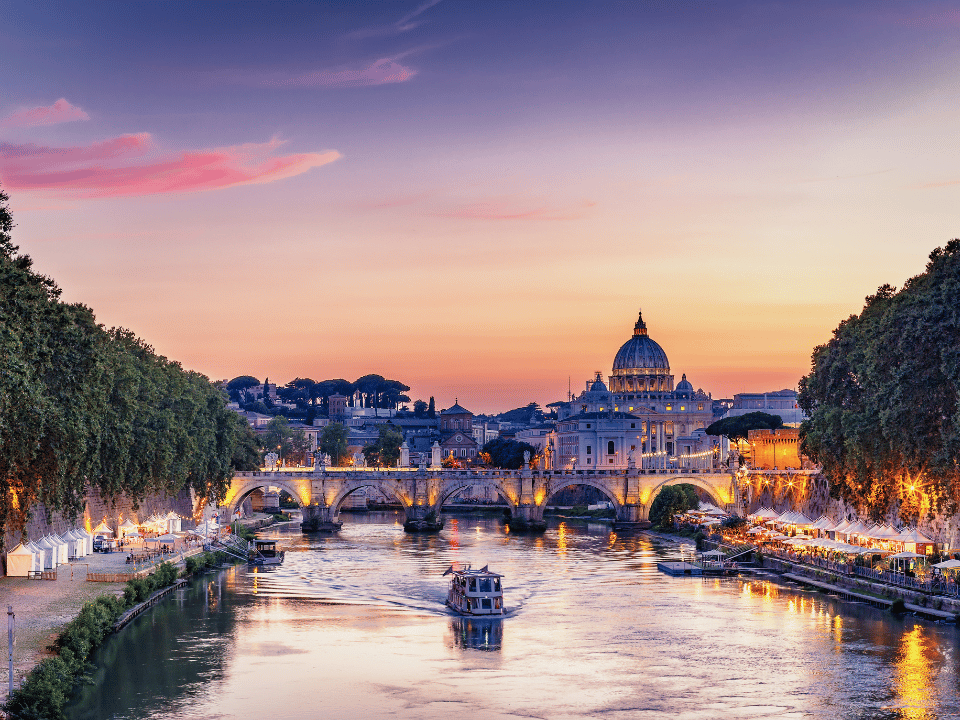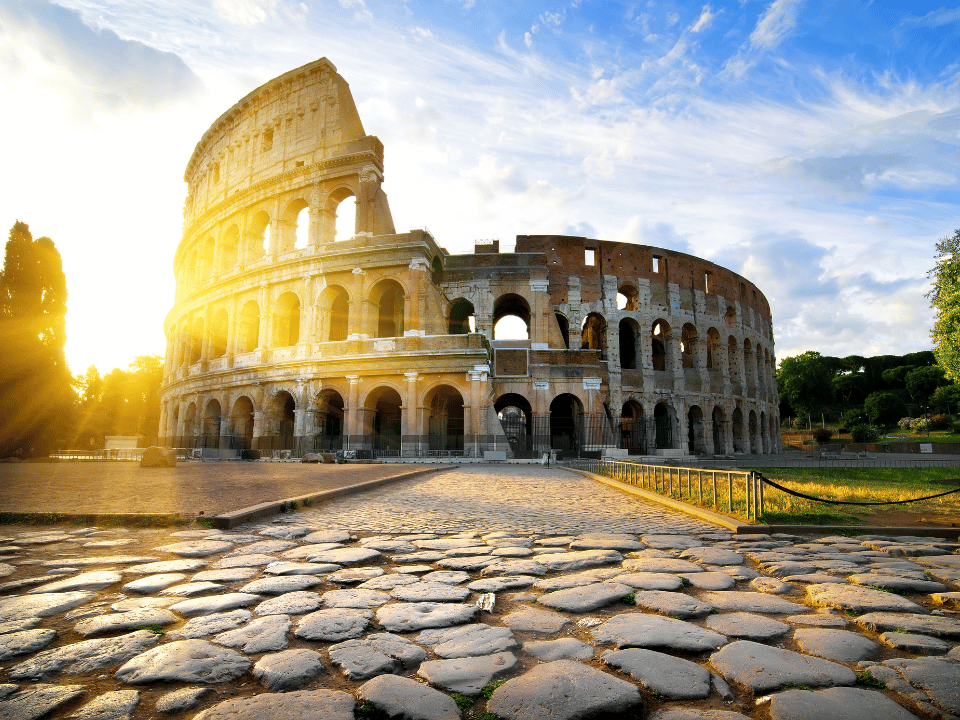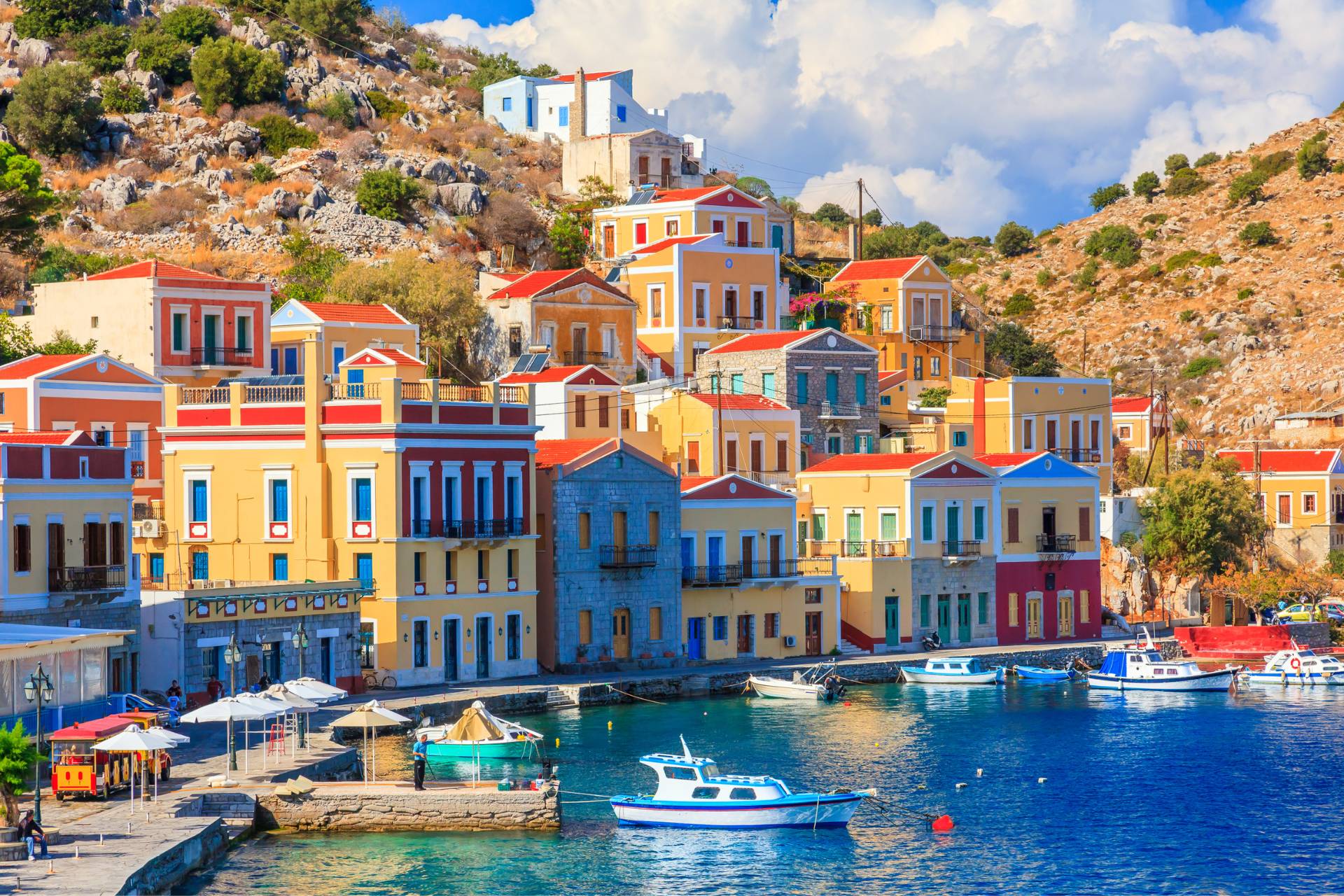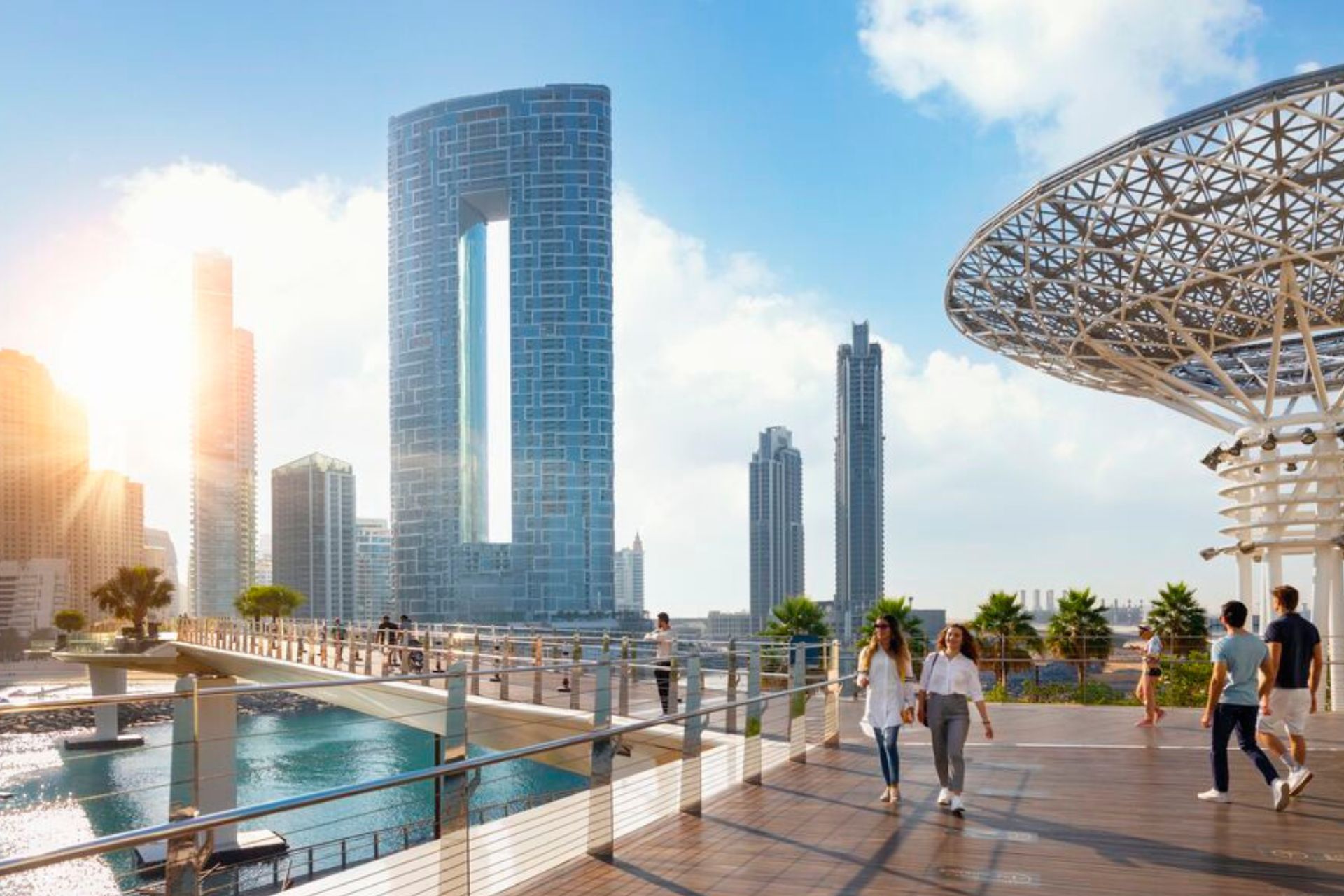Unveiling the Treasures of Rome for All Travelers
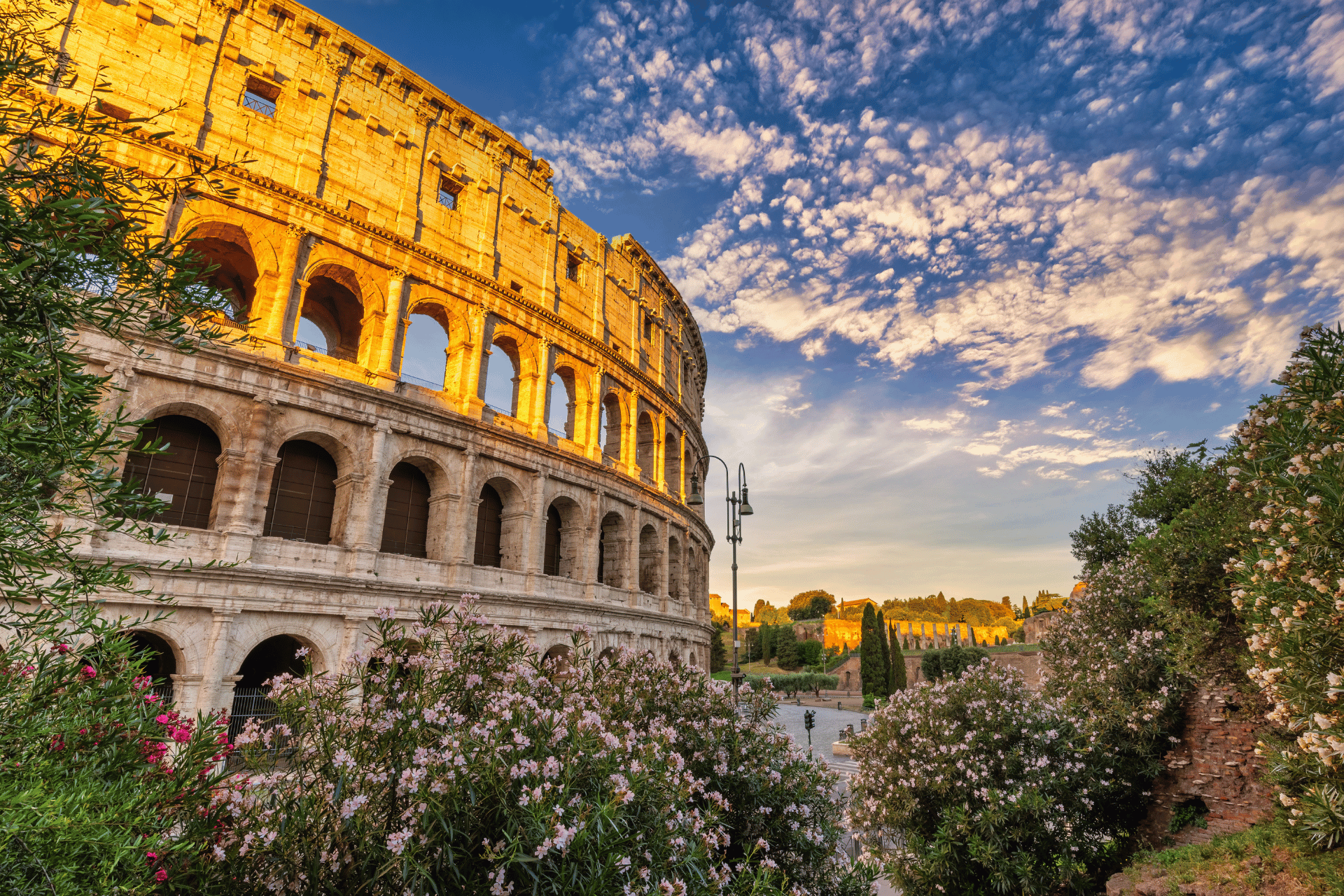
Rome is a city that is rich in history, iconic landmarks, and buildings and structures that are centuries old. It’s also a city that continues to make progress with accessibility so that everyone can enjoy this amazing destination. I was surprised by everything that was accessible and not as disappointed at what wasn’t accessible. From ancient ruins to bustling piazzas, to the Vatican and even getting to attend a Papal Mass and seeing Pope Francis up close, our trip was amazing.
navigating the city
Accessible taxis must be booked in advance and make sure to contact your hotel directly for your specific needs. The sidewalks and streets are mostly cobblestone and can be difficult to navigate, but there are many areas that are better than others – just take your time and be careful! Also know that many of the shops and restaurants may have a step or two to enter but many will offer a portable ramp if you ask. I did not find much that would help people who are blind or vision-impaired, deaf or hard of hearing, or who have a cognitive or intellectual disability, except in major hotels and the train station.
Hotel Details
We stayed at the Anantara Palazzo Naiad Rome Hotel, a beautiful hotel located on Piazza della Repubblica. The hotel is a huge white marble building from the 1800s and features a panoramic rooftop terrace with a seasonal plunge pool. The rooftop terrace is not wheelchair accessible. , and free WiFi throughout. Our room was spacious and decorated with a mix of classic and modern styles.
Our marble and mahogany bathroom had grab bars and a very large roll-in shower – but no bath chair/seat. Some of the rooms in this hotel are in the Clementino area, the former papal granary. The restaurant specializes in Italian and international cuisine and guests can enjoy various dining options including a panoramic terrace. Our time in Rome was amazing and we chose to walk everywhere from our hotel, with the exception of a taxi to Vatican City.
Dining al fresco was the norm and easy, but be sure to get off the main streets and try restaurants a few blocks into the side streets. The food tends to be better, less expensive, (pasta, salad, and a glass of wine for less than 15 Euros!) We also took a day trip to Florence via train and I will write about that in another post.
I highly recommend the places and experiences I have outlined below. Just keep in mind, Rome is an ancient city, it’s not perfectly accessible but is doing more. I can’t wait to get back to Rome and experience even more!
Ancient Sites
Rome’s rich historical heritage is embodied in its ancient sites and efforts have been made to make them accessible for people with disabilities. The Colosseum, one of the city’s most famous landmarks, offers ramps and elevators for wheelchair users. The Roman Forum installed an elevator and has an accessible path, providing access to ancient ruins and breathtaking views, but the path can be uneven and you may need some assistance. The Vatican Museums offer accessible entrances, elevators, and ramps, and people with disabilities can enter for free and even go to the front of the line, which can be very long. We explored just about everything in the Vatican and plan to spend at least an entire day there!
Attractions
Of course Rome’s accessibility extends beyond its historical sites. In addition to The Vatican City, with its world-famous St. Peter’s Basilica which offers accessible entrances, elevators, and wheelchair-friendly paths, be sure to visit The Trevi Fountain. Although it’s surrounded by steps, there is a wheelchair-accessible viewing platform which gets you very close to the fountain. We were awestruck by The Pantheon with its magnificent dome and even featured a ramped entrance for wheelchair access. Additionally, many of Rome’s art galleries and museums, such as the Galleria Borghese, provide accessible facilities and accommodations.
Transportation
Rome has made efforts to enhance its transportation system’s accessibility. The city’s buses, trams, and metro stations offer accessible features, including ramps, elevators, and designated spaces for wheelchair users. The city also provides accessible taxis, such as Transfers Rome Civitavecchia, which are equipped with ramps, but be sure to book in advance – some have apps to download.
Additionally, Rome’s historic center is relatively compact, making it easier to get from one site to another in a short amount of time. Sidewalks are generally well-maintained, but many are cobblestone, and curb cuts are present. We took a train from the Rome Termini Train Station for a day trip to Florence and had no issues with accessibility thanks to ramps and a lift. And, the train station was literally less than two blocks from our hotel.
Dining and Entertainment
Italian food! Oh my! There’s nothing like a freshly-made Italian pasta dish coupled with an Italian wine and gelato for dessert! And, you will find plenty of places to dine throughout Rome. Many restaurants and cafes in the city offer accessible entrances, spacious seating arrangements, and some with accessible restrooms. I found that staff members are usually accommodating and ready to assist you if you ask. The city’s theaters and performance venues, such as Teatro dell’Opera di Roma, offer accessible seating and services for patrons with disabilities but you should contact them in advance as not all entrances and hallways are accessible.
As with all historic places around the world, accessibility can vary greatly. Rome is no different, and is making progress with its commitment to accessibility and to creating an inclusive city for everyone. Before you decide to go to Rome, contact an experienced and knowledgeable travel agent, ask lots of questions, and create an itinerary that meets all of your accessibility needs. It’s possible in Rome, you just need to do your homework. I know I will return to Rome and enjoy an accessible trip!
